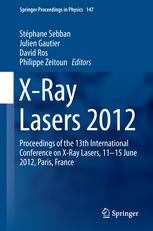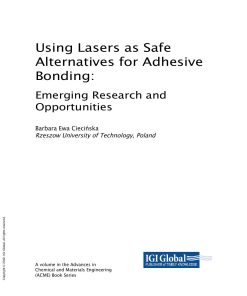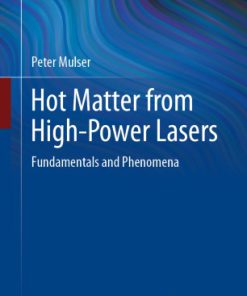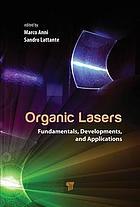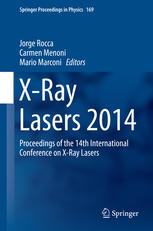High Energy Ecologically Safe HFDF Lasers Physics of Self Initiated Volume Discharge Based HF DF Lasers 1st Edition by Victor Apollonov 9781000066210 1000066215
$50.00 Original price was: $50.00.$25.00Current price is: $25.00.
High Energy Ecologically Safe HFDF Lasers Physics of Self Initiated Volume Discharge Based HF DF Lasers 1st Edition by Victor Apollonov – Ebook PDF Instant Download/Delivery: 9781000066210, 1000066215
Full download High Energy Ecologically Safe HFDF Lasers Physics of Self Initiated Volume Discharge Based HF DF Lasers 1st Edition after payment

Product details:
• ISBN 10:1000066215
• ISBN 13:9781000066210
• Author:Victor Apollonov
High-Energy Ecologically Safe HF/DF Lasers
Physics of Self-Initiated Volume Discharge-Based HF/DF Lasers
This book explores new principles of Self-Initiating Volume Discharge for creating high-energy non-chain HF(DF) lasers, as well as the creation of highly efficient lasers with output energy and radiation power in the spectral region of 2.6–5 μm. Today, sources of high-power lasing in this spectral region are in demand in various fields of science and technology including remote sensing of the atmosphere, medicine, biological imaging, precision machining and other special applications. These applications require efficient laser sources with high pulse energy, pulsed and average power, which makes the development of physical fundamentals of high-power laser creation and laser complexes of crucial importance. High-Energy Ecologically Safe HF/DF Lasers: Physics of Self-Initiated Volume Discharge-Based HF/DF Lasers examines the conditions of formation of SSVD, gas composition and the mode of energy input into the gas on the efficiency and radiation energy of non-chain HF(DF) lasers. Key Features: Shares research results on SSVD in mixtures of non-chain HF(DF) lasers Studies the stability and dynamics of the development of SSVD Discusses the effect of the gas composition and geometry of the discharge gap (DG) on its characteristics Proposes recommendations for gas composition and for the method of obtaining SSVD in non-chain HF(DF) lasers Develops simple and reliable wide-aperture non-chain HF(DF) lasers and investigates their characteristics Investigates the possibilities of expanding the lasing spectrum of non-chain HF(DF) lasers
High Energy Ecologically Safe HFDF Lasers Physics of Self Initiated Volume Discharge Based HF DF Lasers 1st Table of contents:
1. High-energy HF (DF) lasers with non-chain chemical reaction (literature review)
1.1. Chemical HF(DF) lasers. (The principle of operation and general characteristics)
1.2. HF (DF) lasers with the initiation of non-chain chemical reaction by electric discharge
1.3. The problem of increasing the energy characteristics of non-chain HF lasers
1.4. Search for methods for SSVD formation in the working mixtures of HF(DF) laser
1.5. P–P non-chain HF (DF) lasers with a high pulse repetition rate
2. Self-initiated volume discharge in working environments of non-chain HF(DF) lasers
2.1. SIVD in highly electronegative gases (methods of preparation and basic properties)
2.1.1. Description of experimental facilities and experimental techniques
2.1.2. General characteristics of SIVD
2.1.3 Effect of UV illumination on SSVD characteristics
2.1.4. Investigation of the stability of SIVD in SF6 and mixtures based on it
2.1.5. Dynamics of the formation of SIVD
2.1.6 Factors affecting the spatial homogeneity of SIVD in SF6 mixtures with hydrocarbons
2.1.7. Influence of the inhomogeneity of the electric field in the gap on the stability of SIVD
2.2. Numerical simulation of the SIVD in SF6-based gas mixtures
2.2.1 Calculation of the characteristics of SIVD in the working mixtures of HF laser
2.2.2. Modelling of the channel structure of SIVD in SF6 and mixtures based on it
2.3. Qualitative analysis of the mechanisms for limiting the current density in the diffuse channel in SF6
3. Effect of limiting current density in the diffusion channel
3.1. Study of the characteristics of a single diffuse channel in SF6 and mixtures based on it
3.1.1 Description of experimental installations and experimental techniques
3.1.2. Investigation of the characteristics of a single diffuse channel unlimited by external walls
3.1.3. Investigation of the characteristics of the diffuse channel bounded by external walls
3.1.4. Numerical simulation of limited SSVD
3.1.5. Analysis of the results
3.2. Characteristics of the SSVD under conditions of strong population of vibrationally excited states of SF6 molecules
3.2.1. Experimental setup and experimental methods
3.2.2. Determination of CO2 laser energy absorbed in the discharge gap
3.2.3. Investigation of the effect of CO2 laser radiation on the combustion voltage of SSVD in SF6 and mixtures based on it
3.2.4. The role of the electron attachment process to vibrationally excited SF6 molecules in the effect of limiting the current density
3.2.5. Analysis of the results
4. Mechanisms of development of plasma instabilities of self-initiated volume discharge in working mixtures of non-chain HF(DF) lasers
4.1. Description of the experimental setup and experimental methodology
4.2. Characteristics of SIVD in SF6 and mixtures based on it when exposing the discharge gap to the radiation of a pulsed CO2 laser
4.2.1. Effects of CO2 laser radiation on the spatial structure and stability of SIVD in SF6 and mixtures based on it
4.2.2. SIVD in SF6 and SF6 mixtures with C2H6 under conditions of development of shock-wave perturbations
4.2.3. Analysis of results
4.3. Critical electric field strength in SF6 and its mixtures with C2H6 at high temperatures
4.3.1. Experimental setup and measurement technique
4.3.2. Analysis and discussionl of the experimental results
4.4. Negative instability in active media of electric-discharge non-chain HF(DF) lasers
4.4.1. Experimental setup and experimental results
4.4.2. Non-linear mechanism for the development of ionization in active media HF (DF) lasers
4.4.3. Self-organization of SSVD plasma during laser heating of SF6-based mixtures
4.4.4. Mechanism of propagation of conducting channels in SF6
4.4.5. Analysis of the results
5. Powerful pulse and pulse-periodic non-chain HF(DF) lasers
5.1. Non-chain electric-discharge HF(DF) lasers with a short discharge pulse duration and a small volume of active medium
5.1.1. Description of the experimental setup
5.1.2. Experimental results
5.2. Measurement of the divergence of the radiation of a non-chain HF (DF) laser initiated by an SIVD
5.2.1. Methods of measuring the radiation divergence and the experimental results
5.3. Control of HF (DF) lasers using Talbot interferometry
5.3.1. Experimental setup and experimental technique
5.3.1.1. Selection of screens for visualization of non-chain HF(DF) laser radiation
5.3.1.2. Experimental setup on registration of interferograms
5.3.1.3. Electric-discharge HF(DF) laser for testing the technique of controlling WF by Talbot interferometry
5.3.2. Results of experiments to study the possibility of visualizing the radiation of non-chain HF(DF) laser by various screens
5.3.3. Analysis results
5.4. 400 J pulsed non-chain HF laser. Scaling capabilities of the characteristics of non-chain HF(DF) lasers excited by SIVD
5.4.1. Experimental setup
5.4.2. Ability to scale the characteristics of non-chain HF lasers
5.4.3 Pulse-periodic (P–P) HF(DF) lasers with an average power over 1 kW
5.5. High-energy non-chain P–P HF(DF) lasers with solid-state pump generators
5.5.1. Experimental setup
5.5.2. Experimental results and discussion
6. Application of non-chain HF(DF) lasers
6.1. The main areas of application of non-chain HF(DF) lasers (a brief literature review)
6.2. Possibilities for expanding the lasing spectrum of an HF(DF) laser
6.2.1. Chalcogenide crystals (ZnSe, ZnS) doped with transition metal ions (Fe2+)
6.2.2. Experimental setup and measurement technique
6.2.3. Samples of crystal structures used in experiments
6.2.4. Experimental results and discussion
6.2.5. Analysis of results
Conclusion
Bibliography
Index
People also search for High Energy Ecologically Safe HFDF Lasers Physics of Self Initiated Volume Discharge Based HF DF Lasers 1st:
high-energy ecologically safe hf/df lasers-physics
high-energy lasers
high-power lasers for directed-energy applications
high energy laser systems test facility
a high energy pulsed laser emits
You may also like…
Engineering




